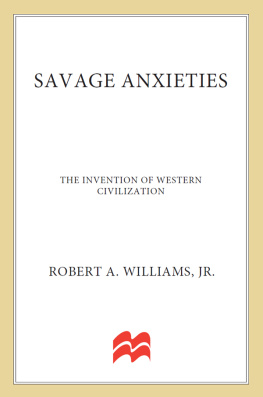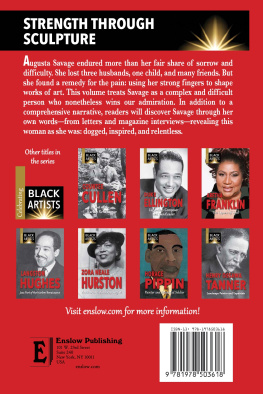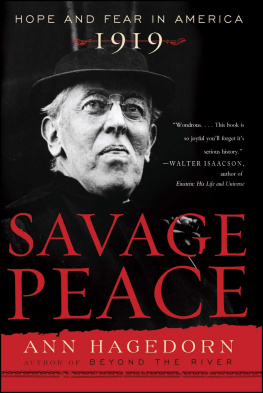S AVAGE
ANXIETIES
THE INVENTION OF WESTERN CIVILIZATION
ROBERT A. WILLIAMS, Jr.

The author and publisher have provided this e-book to you for your personal use only. You may not make this e-book publicly available in any way. Copyright infringement is against the law. If you believe the copy of this e-book you are reading infringes on the authors copyright, please notify the publisher at: us.macmillanusa.com/piracy.
SAVAGE ANXIETIES
Copyright Robert A. Williams, Jr., 2012.
All rights reserved.
For information, address St. Martins Press, 175 Fifth Avenue, New York, N.Y. 10010.
First published in 2012 by PALGRAVE MACMILLAN in the United Statesa division of St. Martins Press LLC, 175 Fifth Avenue, New York, NY 10010.
ISBN 978-0-230-33876-0
Our eBooks may be purchased in bulk for promotional, educational, or business use. Please contact the Macmillan Corporate and Premium Sales Department at 1-800-221-7945, ext. 5442, or by e-mail at .
Library of Congress Cataloging-in-Publication Data
Williams, Robert A., 1955
Savage anxieties : the invention of western civilization / by Robert A. Williams, Jr.
p. cm.
ISBN 978-0-230-33876-0
1. Indigenous peoples. 2. Noble savage. 3. Tribes. 4. Primitive societies.
I. Title.
GN380.W549 2012
305.8dc23
2012011360
A catalogue record of the book is available from the British Library.
Design by Letra Libre, Inc.
First edition: August 2012
10 9 8 7 6 5 4 3 2 1
Printed in the United States of America.
CONTENTS
For Joy
ACKNOWLEDGMENTS
Many friends, colleagues, and students generously helped me in writing this book over the course of the past decade. My wife, Joy Fischer Williams, to whom the book is dedicated, deserves special thanks. I also wish to thank my agent at Trident Media Group, Don Fehr, for his enthusiasm and support for the project from the start. I am also grateful to Luba Ostashevsky at Palgrave Macmillan who provided me with invaluable advice and assistance in the early stages of turning my book proposal into an actual manuscript, and Karen Wolny, Editorial Director at Palgrave Macmillan, who came up with the title and also encouraged me to write the book that was always inside my head. I want to especially acknowledge Akilah Kinnison, who helped me to edit, proofread, and cite-check the entire manuscript several times over. Ive delivered many talks over the years in developing the ideas in the book, but I particularly remember the formative exchanges with students and faculty at the School of Oriental and African Studies at the University of London, organized by Professor Catriona Drew; at the Critical Race Studies program at the University of California, Los Angeles, organized by Professor Addie Rolnick; at the National Centre for Indigenous Studies at Australian National University, organized by Professor Mick Dodson; at the Native American Studies Institute at the University of Georgia, organized by Professor Jace Weaver; and at American Indian Studies at the University of Illinois Urbana-Champaign, organized by Professors Robert Warrior and Fred Hoxie. My deans at the University of Arizona Rogers College of Law, Toni Massaro and Larry Ponoroff, have provided me with invaluable institutional support and encouragement. My colleagues and students at the Indigenous Peoples Law and Policy Program have been a continuing source of inspiration and knowledge. Thanks to all.
INTRODUCTION
We are all Greeks. Our laws, our literature, our religion, our arts have their roots in Greece. But for GreeceRome, the instructor, the conqueror, or the metropolis of our ancestors, would have spread no illumination with her arms, and we might still have been savages and idolaters; or, what is worse, might have arrived at such a stagnant and miserable state of social institution as China and Japan possess.
Percy Bysshe Shelley, Preface to Hellas (1821)
From its very beginnings in ancient Greece, Western civilization has sought to invent itself through the idea of the savage. We are all familiar with the basic elements of the idea: The savage is a distant, alien, uncivilized being, unaware of either the benefits or burdens of modernity. Lacking in sophisticated institutions of government and religion, ignorant of property and laws, without complex social bonds or familial ties, living in a state of untamed nature, fierce and ennobled at the same time, the savage has always represented an anxious, negating presence in the world, standing perpetually opposed to Western civilization. As I argue in this book, without the idea of the savage to understand what it is, what it was, and what it could be, Western civilization, as we know it, would never have been able to invent itself.
Throughout the book, I tell the story of the Wests three-thousand-year obsession with the idea of the savage by looking at influential examples, enduring works, and great thinkers and writers who have used this construct to reflect on the essential differences between their own seemingly more advanced, Westernized form of civilization and the rest of the world. Along the way, I hope to show how the ancient notion of an irreconcilable difference between civilization and savagery has helped to shape and direct the Wests response and actions toward the non-Western world from its earliest beginnings in ancient Greece.
I begin the story with the ancient Greeks because that is where the identifying markers and iconic imagery associated with the idea of the savage in the West were invented. Although certainly not racists, as we understand that term today in the twenty-first century, the ancient Greeks did give birth to Western civilizations first and most influential stereotypes of non-Westernized peoples. As modern social science research teaches us, this type of stereotyping and categorizing of peoples we regard as different from ourselves can be a trigger for what we recognize today as racist behaviors and attitudes.
The term stereotype is derived from ancient Greek stereos, meaning solid, firm, and tupos, meaning blow, impression, engraved mark. Thus comes our English word stereotype, or solid impression. The Greek neologism does a nice job of capturing the durability of the mental image left on the imagination once introduced to such iconic stereotypes as the fierce or ennobled savage. But the Greeks cannot claim credit beyond these roots for inventing the word. Stereotype is an early-nineteenth-century coinage from the world of printing, borrowed and made famous by the Pulitzer Prizewinning journalist Walter Lippmann. Lippmann featured the term prominently in his influential 1922 book, Public Opinion, calling stereotypes pictures in our heads.
A generation after Lippmann popularized the term, Western social scientists were demonstrating how stereotypes could serve as root generating causes of racial and ethnic prejudice in a democratic, pluralistic society like the United States. Gordon Allport, an American pioneer in the field of racial stereotyping, defined prejudice in his classic 1954 book, The Nature of Prejudice, as an avertive or hostile attitude toward a person who belongs to a group, simply because he belongs to that group, and is therefore presumed to have the objectionable qualities ascribed to the group. Stereotypes, as Allport and other influential scholars at the beginnings of the postWorld War II civil rights era showed in their groundbreaking research, play an important role in rationalizing individual prejudice and bias in attitudes and behaviors toward certain ethnic and racial groups in our society. They are much more, in other words, than just mere pictures in our heads. They shape the way we see the world and react to others in it.














